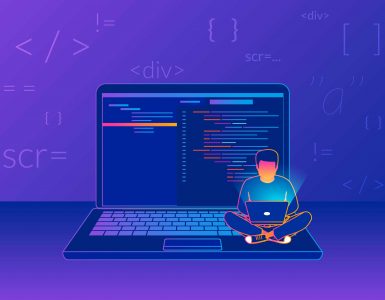The role of back-end developers is crucial in shaping the functionality and performance of web applications and services. And in the ever-evolving landscape of technology, staying abreast of the latest trends is paramount for professionals in the field. For back-end developers, this means keeping up with the dynamic demands of the industry.
In this article, we’ll talk about the growing importance of backend development skills in various industries and explore the top 10 trends in employer demand for back-end skills, highlighting the expertise and knowledge required to thrive in this competitive field.
How important is learning new trends in backend development?
Back-end development skills are essential in 2023, not only for career growth but also for ensuring that the digital solutions we rely on remain efficient, secure, and capable of integrating emerging technologies. Whether you’re a seasoned developer or just starting your journey, acquiring and honing these skills will position you well in a tech industry that continues to evolve at a rapid pace.
Must have skills for back-end developer in 2023
Trend 1: Cloud Computing
Cloud computing has revolutionized the way businesses manage their data and applications. As more organizations migrate to the cloud, the demand for back-end developers with expertise in platforms like AWS, Azure, and Google Cloud has surged. Skills related to cloud services, infrastructure as code (IAC), and serverless computing are invaluable, as they enhance scalability, reliability, and cost-efficiency.
You can acquire cloud computing skills through online courses, certifications, and practical experience. AWS, Azure, and Google Cloud are the most in-demand platforms. Learning resources from these providers and other accredited training programs can help you get started.
Trend 2: Microservices Architecture
Microservices have gained prominence for their ability to promote modularity, agility, and efficient resource allocation. Back-end developers are increasingly expected to design, build, and manage microservices, making proficiency in this architectural pattern a high-demand skill.
Trend 3: Serverless Computing
Serverless computing is a cloud computing model where developers focus on writing code without managing the underlying server infrastructure. It simplifiesinfrastructure management, allowing developers to focus on coding without the burden of server maintenance. Skills related to serverless technologies, such as AWS Lambda and Azure Functions, are in high demand as companies seek to reduce operational overhead. Serverless computing is a growing trend because it offers cost-efficiency, scalability, and reduced operational burden. Companies are increasingly adopting serverless technologies like AWS Lambda and Azure Functions.
Trend 4: Containerization and Docker
Containerization, particularly through Docker, has become a standard in modern back-end development. Proficiency in managing and deploying containers is essential for developers to ensure consistency and portability in various environments.
The integration of DevOps practices and CI/CD pipelines has redefined software development. Back-end developers are expected to work closely with operations teams and contribute to the automation of software delivery pipelines. Skills in Git, Jenkins, and orchestration tools are essential to meet these demands.
Trend 5: DevOps and Continuous Integration/Continuous Deployment (CI/CD)
The integration of DevOps practices and CI/CD pipelines has redefined software development. Back-end developers are expected to work closely with operations teams and contribute to the automation of software delivery pipelines. Skills in Git, Jenkins, and orchestration tools are essential to meet these demands.
Trend 6: Cybersecurity and Data Privacy
With the increasing number of data breaches and privacy concerns, back-end developers are tasked with securing sensitive information. Proficiency in security measures, encryption, and compliance with data protection regulations is a skill set in high demand.
Trend 7: Real-time Data Processing
The demand for real-time data processing has grown exponentially with the need for instant insights. Technologies like Apache Kafka and RabbitMQ play a pivotal role in this trend. Back-end developers who can work with real-time data processing technologies are increasingly sought after.
Trend 8: Cross-Platform Development
Cross-platform development tools such as React Native and Flutter have gained popularity, enabling the creation of apps for multiple platforms using a single codebase. Back-end developers who can contribute to these projects are in high demand, necessitating skills in these cross-platform frameworks.
Trend 9: AI and Machine Learning Integration
AI and machine learning are being integrated into back-end systems to process and analyze data, enabling intelligent decision-making. Back-end developers who can work with these technologies, implement algorithms, and optimize data processing are highly sought after.
Preparing for AI and machine learning integration involves learning about data processing, machine learning algorithms, and optimization techniques. Online courses, books, and hands-on projects related to data science and machine learning can help you acquire the necessary skills.
Trend 10: Collaboration and Communication Skills
In addition to technical expertise, soft skills such as effective communication and collaboration with cross-functional teams are becoming increasingly crucial for back-end developers. Effective communication, teamwork, and the ability to collaborate with cross-functional teams are essential soft skills for back-end developers. Clear and concise communication is vital for conveying technical concepts and requirements to non-technical team members and stakeholders. The ability to work seamlessly with designers, front-end developers, and project managers is a skill that employers value.
How learning these skills can shape your professional career
The importance of learning back-end development skills in 2023 cannot be overstated, as these skills continue to play a crucial role in the ever-evolving tech industry. A typical income graph for a back-end developer generally shows a steady increase in income over time, as the developer gains experience and expertise.
Here’s a simplified description of what these skills can offer to back-end developers:
- Entry-Level (0-2 years): Back-end developers typically start with an entry-level salary, which can vary based on factors like location and the company they work for. In the United States, this can range from $50,000 to $80,000 or more.
- Mid-Level (3-5 years): With a few years of experience, back-end developers often see a significant bump in their income. Salaries for mid-level developers may range from $80,000 to $120,000 or more, depending on factors such as location and specialization.
- Senior-Level (6+ years): Senior back-end developers, who have accumulated a wealth of experience and expertise, can command higher salaries. Their income may range from $120,000 to $200,000 or more, and in some cases, it can exceed this range, especially in high-demand locations or specialized industries.
- Specialization: Income can vary significantly based, on the developer’s area of specialization. For example, back-end developers with expertise in niche areas like cybersecurity, cloud computing, or AI integration may command higher salaries than those with general back-end development skills.
Final Words
The back-end development landscape is constantly evolving, and staying relevant in this field requires continuous learning and adaptation. By understanding and harnessing these top 10 trends in employer demand for back-end skills, developers can position themselves for a successful and fulfilling career. The ability to master these trends not only makes developers more attractive to employers but also equips them to build robust, efficient, and secure back-end systems in an ever-changing technological world. So, whether you’re a seasoned professional or just starting your career, embracing these trends will undoubtedly enhance your value in the job market.
Frequently Asked Questions (FAQs)
Q1: What are back-end skills, and why are they important in the tech industry?
A1: Back-end skills are a set of technical competencies that enable professionals to build and maintain the server-side of web applications and services. They are crucial because they directly impact a system’s functionality, performance, and security. Back-end developers are responsible for managing databases, server infrastructure, and application logic, making their skills integral to the tech industry.
Q2: Why is it important for back-end developers to stay updated with industry trends?
A2: Staying updated with industry trends is crucial for back-end developers to remain competitive and valuable in the job market. Technology is constantly evolving, and companies seek developers who can leverage the latest tools and techniques to build efficient, scalable, and secure back-end systems.
Q7: Are these trends applicable to all industries, or are there specific sectors where they are more relevant?
While these trends are relevant across various industries, their significance may vary. For example, cybersecurity and data privacy are critical in finance and healthcare, while real-time data processing is essential in industries like e-commerce and online gaming.
Q8: Are there specific certifications or courses recommended for back-end developers to acquire these skills?
Yes, there are many certifications and courses tailored to these trends. AWS, Azure, and Google Cloud offer certifications for cloud computing. Platforms like Coursera, edX, and Udacity provide courses on DevOps, containerization, cybersecurity, and many other topics covered in these trends.
Q9: What would be the best advice for professionals looking to advance their back-end development career in light of these trends?
To advance your career, continuously invest in learning and adapting to these trends. Consider obtaining relevant certifications, participating in open-source projects, and networking with professionals in your field. Stay curious, explore emerging technologies, and be proactive in your career development.
Q10: How can I stay updated on the latest trends in back-end development as they continue to evolve?
To stay updated, subscribe to tech news websites, follow industry blogs, join relevant online communities, and participate in conferences and webinars. Networking with peers and staying engaged with online resources will help you keep up with the ever-changing landscape of back-end development.






Add comment